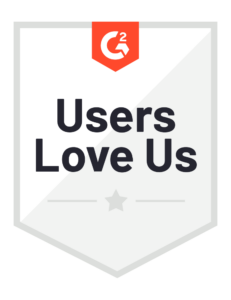4 Processes That Benefit from Standardized Journal Entry Visibility and Integration
Blog post
Share
Journal Entries often make up a huge portion of a company’s financial close efforts, and as companies grow and scale – both from a revenue and a global perspective – they can become increasingly complex and risk-prone. Difficult to track, difficult to maintain and difficult to manage, the journal entry process can be a major headache for the Office of Finance.
It doesn’t have to be, though, and more and more organizations are looking for solutions to not only standardize the journal entry process but automate it intelligently. CadencyDirect by Trintech is helping enterprises across the globe add controls into a complicated process and increase efficiency and effectiveness while reducing cost and risk.
CadencyDirect’s built-in technology like Journal Entry Dynamic Approver Routing ensures that the right people – even the right number of people – are looking at a journal entry based on criteria such as amounts, location and company codes.
Artificial Intelligence Risk Rating for Journal Entry within CadencyDirect helps companies determine the risk of each journal entry, adding a dynamic review to journals that humans simply can’t accomplish on their own.
Automation to handle recurring journals and automatic reversals also ensures your team is only focusing on the journals that need attention, whether they’re high in risk or an exception in your standardized processes.
But what about journals that go beyond the Office of Finance? Larger enterprises often have intercompany journals to account for, involving many parts of the business. High-risk journals may need approval from stakeholders outside of the normal approvals workflow. Internal audit needs to ensure processes are running smoothly and account for exceptions. Topside journals posted during the disclosure and reporting process can get lost in transit.
That’s where the CadencyDirect ServiceNow Application comes in.
CadencyDirect is the only natively built Now application for the ServiceNow platform that is designed specifically for the unique needs of the Office of Finance.
The CadencyDirect application on the Now Platform brings visibility of the financial close process, including the Journal Entry process, to relevant ServiceNow users so even teams outside of the Record to Report (R2R) process may gain the necessary insights and data visibility in real time, bringing that all-important real-time data to ancillary but vital teams such as Inventory, Supply Chain, Legal, Internal Audit, Financial Reporting and more. No longer are these teams reliant on individuals within other areas of the Office of Finance – potentially in different regions and time zones, even – to provide updates and data about the Journal Entry process. They can simply view the data and details necessary to their respective processes, in real-time throughout the period-end cycle.

Automate High-Risk Journal Approvals Through ServiceNow
For most journals one, two or even three rounds of approval may be sufficient and may not require eyes outside of the Office of Finance at any step. But high-risk journals often need additional attention.
CadencyDirect can dynamically evaluate various criteria to notify relevant stakeholders when a journal has been posted above a certain amount, for instance, so appropriate action can be taken, whether that’s a simple review or a more in-depth approvals process. The built-in workflow tools in ServiceNow ensure whatever workflows make sense for your organization are enforced and executed.
Additionally, maintenance of these workflows is simplified with ServiceNow’s easy-to-use interface, so as business process changes occur, the impacted workflows can be easily updated as well.
Topside Journal Visibility in Disclosure Reporting
At the end of the financial close process comes the Disclosure and Reporting process, which is likely handled by an entirely different team, especially in dispersed enterprise organizations where Shared Services and outsourcing models may be common. This creates complexity when posting a topside journal.
CadencyDirect integrates seamlessly with Workiva’s Wdesk Disclosure Management solution, enabling teams to work together without having to rely on manual communication which can easily break down. With ServiceNow’s workflows, the Disclosure team can submit topside journals, CadencyDirect will process them through their standardized processes and the disclosure and reporting teams will be notified when the journals are validated and posted.

Clear Visibility for Internal Audit and Compliance Teams
The Journal Entry process can be very fraud-prone, with employees exploiting the complexity of the work to avoid detection. This risk is especially present when manual processes are relied on and only grows as the company does. Standardizing this process can go a long way in reducing risk, but without strong internal processes room for problems remains.
However, clear visibility for the Internal Audit and Compliance teams can help mitigate this risk. Data is brought into the ServiceNow Application with CadencyDirect in real-time, allowing the GRC team to closely monitor and even trigger workflows based on certain behaviors. For instance, if a journal is reversed, this may be cause for closer scrutiny, depending on the amount of other factors. A journal that is rejected more than once in a period may warrant a double check to figure out if a process needs to be evaluated.
CadencyDirect’s integration with other areas of the ServiceNow platform allows for robust workflows to standardize in these scenarios.
Deeply Integrated Intercompany Visibility
For enterprise organizations, one of the more complex business realities is dealing with intercompany transactions and journal entries. This process can involve people from across business units, countries, departments and companies, creating confusion and opportunity for mistakes.
CadencyDirect has built-in functionality to handle intercompany complexities from both a preventative and a detective perspective. For example, users can post a journal entry to multiple ERPs, or multiple preparers can easily work on the same journal.
Then CadencyDirect extends that visibility out of the Office of Finance and into the rest of the organization, allowing relevant stakeholders to review and gain insight on transactions that were previously handled in a silo. The Supply Chain team can be notified when an intercompany journal has been posted, or the Purchase to Pay team can be notified of the rejection of a journal if important information is missing. This collaboration previously relied on manual efforts but can be smoothly run using ServiceNow’s best-in-class workflow procedures.

CadencyDirect and ServiceNow Simplify and Extend the Benefit of Strong Journal Entry Accounting
These are just a few examples of some of the business streams that can greatly benefit from additional journal entry standardization and visibility, but the possibilities are huge and as unique as your business. Luckily, CadencyDirect and ServiceNow have the tools to meet your organization wherever you may be on your financial and digital transformation journey. Whether you’re an existing ServiceNow customer, new to the world of automation or somewhere in between, CadencyDirect by Trintech and ServiceNow can help.
Learn more about this journey here.
 Written by:
Written by:
Sam King
Senior Product Owner







